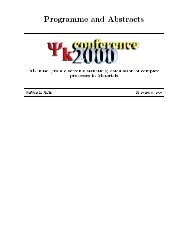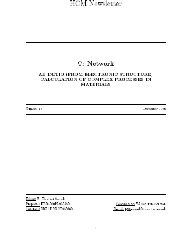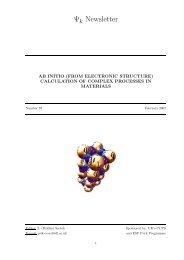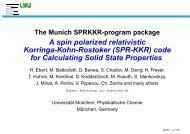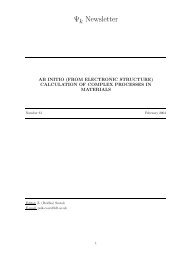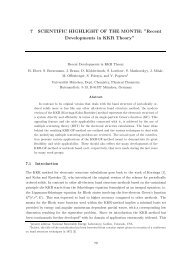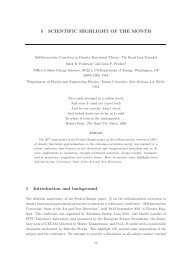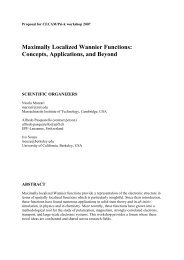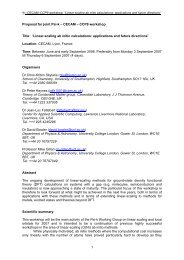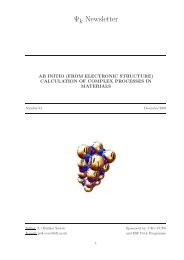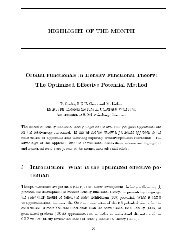Newsletter 107 - October 2011 - (pdf - 0.6 MB) - Psi-k
Newsletter 107 - October 2011 - (pdf - 0.6 MB) - Psi-k
Newsletter 107 - October 2011 - (pdf - 0.6 MB) - Psi-k
You also want an ePaper? Increase the reach of your titles
YUMPU automatically turns print PDFs into web optimized ePapers that Google loves.
accuracy and ability to perform quantum simulations under realistic conditions. He suggested<br />
possible solutions for these challenges based on constrained DFT, extended Hubbard functionals,<br />
or on imposing a generalization of Koopmans’ theorem. Klaus Capelle started from reviewing<br />
connections between DFT and model Hamiltonians, highlighting the many possible benefits that<br />
arise from using insights from DFT to study model Hamiltonians, and ideas arising from model<br />
Hamiltonians to improve functionals for DFT. He considered orbital-dependent functionals, the<br />
PZ-SIC, and compared results from six different levels of approximate implementation, ranging<br />
from simple post-LDA strategies to a full OEP, to available exact results. Stephan Kuemmel<br />
discussed the Kohn-Sham approach to the SIC using one global multiplicative potential and<br />
studied the effects of orbital localization and the physical reliability of the thus obtained eigenvalues<br />
of organic semiconductor molecules. Peter Kluepfel presented results of self-consistent<br />
calculations of PZ-SIC applied to GGA and LDA functionals for atoms, molecules and solids.<br />
The use was made of an efficient method to minimize the energy with respect to the orbitals, involving<br />
explicit unitary optimization. Olle Eriksson gave the last invited talk of Monday, briefly<br />
outlining the Lundin-Eriksson approach to SIC, then full-potential LMTO implementation of<br />
PZ-SIC and recent developments of DMFT.<br />
The poster session was very lively and enjoyed by all the participants. A few minutes long<br />
oral introductions of the posters by their presenters were found very helpful in organizing one’s<br />
viewing preferences. A special highlight of the evening was a cake presented to John Perdew and<br />
Alex Zunger (see the photos below), with the first page of their seminal SIC paper imprinted on<br />
the icing on the top of the cake. Since the CECAM Council had decided to fund the SIC meeting<br />
not as a regular workshop, but as a celebration event, we came to conclusion that a cake, would<br />
be a fitting tribute to the celebration. The cake was cut by Alex, with John’s assistance, and<br />
as seen in the photograph below, both seem to have enjoyed the experience and, hopefully, the<br />
cake as well. The cake was large enough, so everybody could eat a piece of it, and the lucky<br />
ones could even get a taste of an equation or similar.<br />
19



